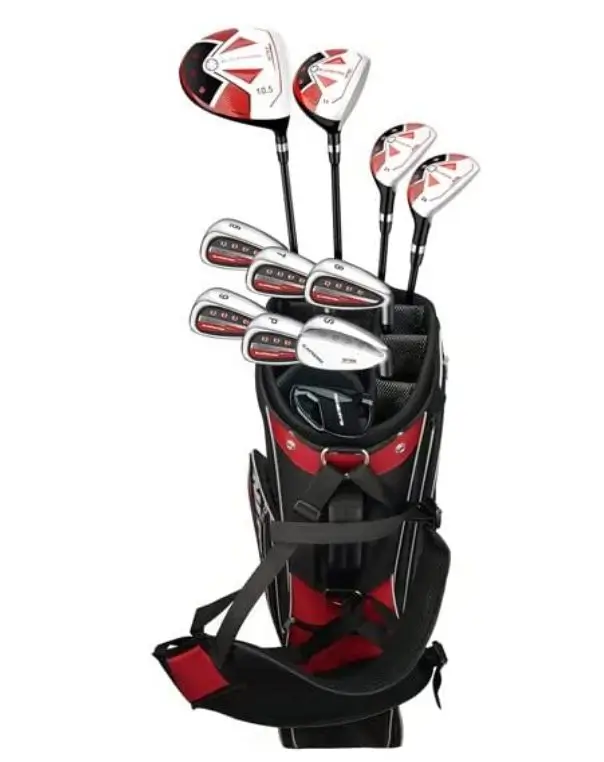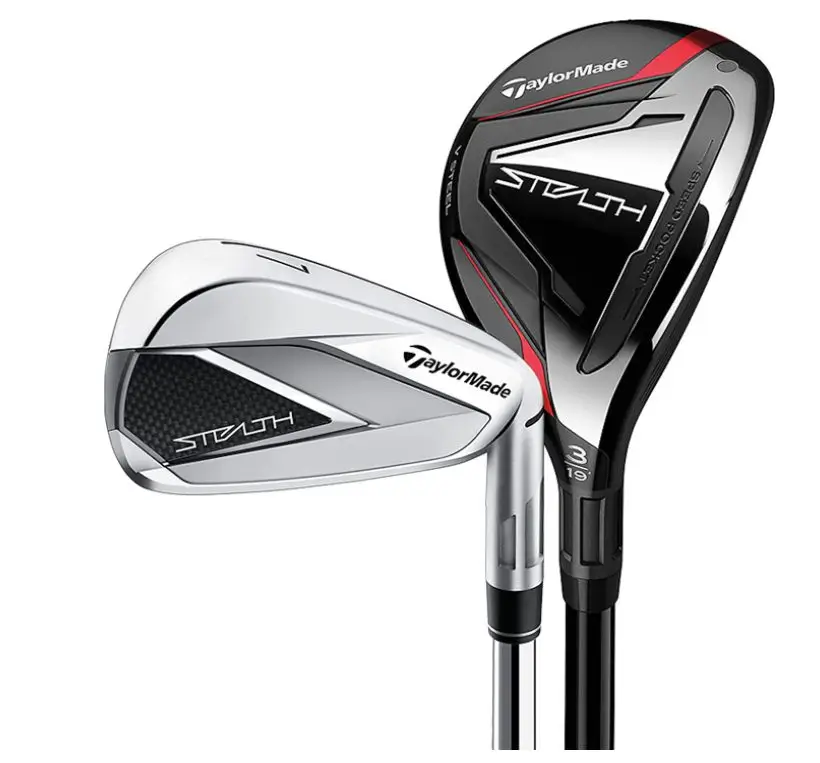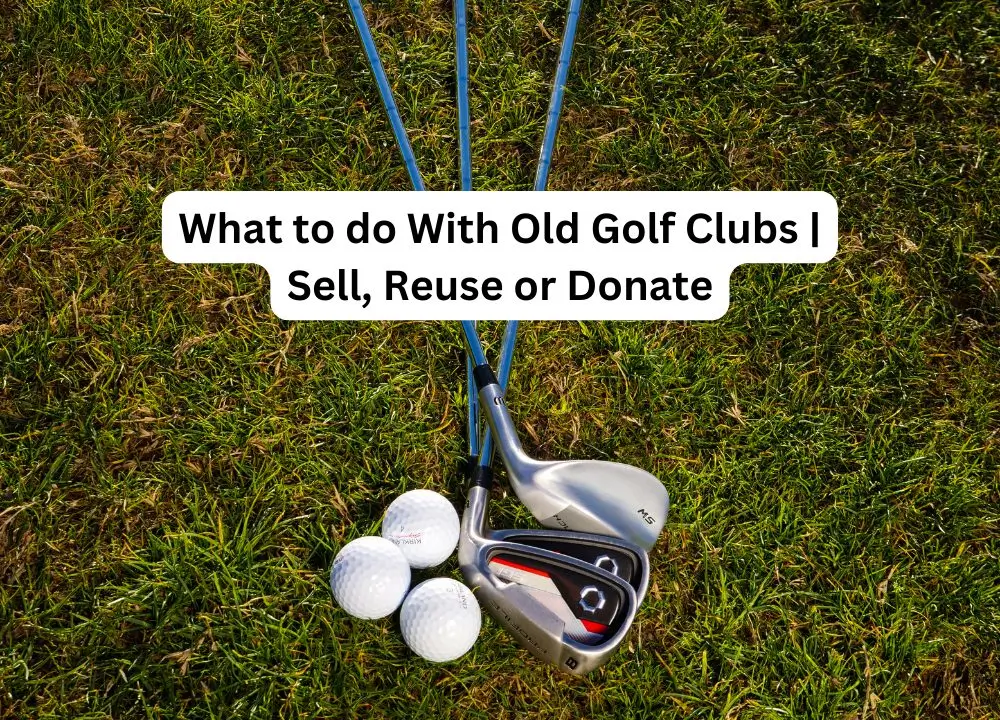The distance your ball travels after hitting with a club varies from individual to individual, and enthusiastic golfers are very concerned about this. Have you ever wondered why getting your distance right matters significantly while playing golf?
Each type of club affects the distance and accuracy of the swing widely. Therefore, having information about the distance covered by a ball by different components is compulsory, and for this purpose, the Golf Club Distance Chart helps you.
The chart considers every factor that affects the distance while selecting a club, like a loft angle, swing and spin rate, weather, personal preference, and skills. It helps you to determine how far you can hit a ball with each club and make amendments accordingly.
The Golf Club Distance Chart does not provide the exact value; it is a rough estimation. The actual value varies depending upon conditions. In this article, you can find all those factors that can affect distance, and you can also find out the distance according to your gender and experience level.
But before discussing the distance, first, find the factors that affect the average distance.
Factors Affecting the Golf Club Distance Chart
There are various metrics based on which you can determine the distance, for instance, age, gender, skill level, spin speed and few others. However, the factor affecting the golf club distance chart remains the same.
This article focuses on the distance a ball travels based on experience. It differentiates it further based on gender while considering the club speed, impact location, loft angle, club path and spin rate.
Each ball’s distance after hitting with a club head varies from person to person and from time to time. Considering why this value changes and what factors affect it, its answer is quite simple; it’s natural.
Keep reading!
Spin Rate
Passionate golfers only determine the importance of a spin rate as too much or too little spin can cause little distance the ball covers. If the loft angle is high or you have poor control of your club, it causes a high spin rate.
However, if you hit the clubface close or open enough, it causes hooks and slices, which ultimately causes a higher spin rate and lower distance covered by the ball.
Speed of Club
The speed with which the club hits the ball decides the speed of the ball and how much distance it travels. If the club swing speed is high, it transfers more incredible energy to the ball, which results in greater distance travelled by the ball.
Club Path
The club speed and spin rate are directly related to the club path. The club speed and spin rate are higher if the loft is higher. This causes hooks and spins and causes the ball to move from left to right or right to left. This also causes lower distance travel by ball.
Launch angle
One can never deny the importance of a launch angle while determining the distance a ball travels after hitting the club. The higher or lower the launch angle, the shorter the distance a ball travels. Therefore make sure it should be accurate.
Location of impact
As an enthusiastic golfer, how much of a sweet spot matters for you? Like other factors, impact location plays a significant role in deciding how far your ball travels. Simply put, it decides how you convert club speed into ball speed.
It is always calculated as ball speed/club speed. More significant the impact at the sweet spot, the greater the distance a ball travels. However, strikes that are out of the club’s heel or low can significantly affect the distance.
Environmental factors
Besides the above factors, some other factors affect the distance—for instance, temperature and altitude. First, to play your short, determine the temperature and altitude of the green or the fairway.
Now let’s find out the distance of each club individually.
Irons
Short Irons
Average Distance
For male
9-irons
- Beginner 95 yards
- Intermediate 115 yards
- Professional 130 yards
For female
9-irons
- Beginner 55 yards
- Intermediate 70 yards
- Professional 95 yards
Experience level
9-irons
- Senior Players 140 yds-145 yds
- PGA Tour Player 148 yds-185 yds
- LPGA Tour Players 119 yds-132 yds
Mid Irons
Average Distance
For male
7-irons
- Beginner 120 yards
- Intermediate 140 yards
- Professional 150 yards
8-irons
- Beginner 110 yards
- Intermediate 130 yards
- Professional 140 yards
For female
7-irons
- Beginner 65 yards
- Intermediate 90 yards
- Professional 120 yards
8-irons
- Beginner 60 yards
- Intermediate 80 yards
- Professional 110 yards
Experience level:
7-iron
- Senior Players 163 yds-169 yds
- PGA Tour Player 172 yds-215 yds
- LPGA Tour Players 141 yds-154 yds
8-iron
- Senior Players 151 yds-157 yds
- PGA Tour Player 160 yds-200 yds
- LPGA Tour Players 130 yds-143 yds
Long Irons
Average Distance
For male
3-irons
- Beginner 160 yards
- Intermediate 180 yards
- Professional 200 yards
4-irons
- Beginner 150 yards
- Intermediate 170 yards
- Professional 180 yards
5-irons
- Beginner 140 yards
- Intermediate 160 yards
- Professional 170 yards
6-irons
- Beginner 130 yards
- Intermediate 150 yards
- Professional 160 yards
For female
3-irons
- Beginner 100 yards
- Intermediate 125 yards
- Professional 160 yards
4-irons
- Beginner 90 yards
- Intermediate 120 yards
- Professional 150 yards
5-irons
- Beginner 80 yards
- Intermediate 110 yards
- Professional 140 yards
6-irons
- Beginner 70 yards
- Intermediate 100 yards
- Professional 130 yards
Experience level:
3-irons
- Senior Players 201 yds-208 yds
- PGA Tour Player 212 yds-265 yds
- LPGA Tour Players 185 yds-215 yds
4-irons
- Senior Players 192 yds-199 yds
- PGA Tour Player 203 yds-254 yds
- LPGA Tour Players 170 yds-181 yds
5-irons
- Senior Players 184 yds-191 yds
- PGA Tour Player 194 yds-243 yds
- LPGA Tour Players 161 yds-173 yds
6-irons
- Senior Players 173 yds-180 yds
- PGA Tour Player 183 yds-229 yds
- LPGA Tour Players 152 yds-163 yds
Woods
Driver
Average Distance
For male
- Beginner 200 yards
- Intermediate 217 yards
- Professional 260 yards
For female
- Beginner 150 yards
- Intermediate 175 yards
- Professional 200 yards
Experience level:
- Senior Players 260 yds-310 yds
- PGA Tour Player 285 yds-321 yds
- LPGA Tour Players 119 yds-132 yds
Fairway woods
Average Distance
For male
3-wood
- Beginner 180 yards
- Intermediate 205 yards
- Professional 235 yards
5-wood
- Beginner 170 yards
- Intermediate 195 yards
- Professional 210 yards
7-wood
- Beginner 160 yards
- Intermediate 185 yards
- Professional 200 yards
For female
3-wood
- Beginner 125 yards
- Intermediate 150 yards
- Professional 180 yards
5-wood
- Beginner 115 yards
- Intermediate 135 yards
- Professional 170 yards
7-wood
- Beginner 105 yards
- Intermediate 95 yards
- Professional 125 yards
Experience level:
3-wood
- Senior Players 230 yds-310 yds
- PGA Tour Player 243 yds-304yds
- LPGA Tour Players 119 yds-132 yds
5-wood
- Senior Players 218 yds-226 yds
- PGA Tour Player 230 yds-288 yds
- LPGA Tour Players 119 yds-132 yds
Wedges
Lob Wedges
Average Distance
For male
- Beginner 50 yards
- Intermediate 70 yards
- Professional 90 yards
For female
- Beginner 35 yards
- Intermediate 45 yards
- Professional 50 yards
Experience level:
- Senior Players yds-yds
- PGA Tour Player yds-yds
- LPGA Tour Player yds-yds
Pitching Wedges
Average Distance
For male
- Beginner 80 yards
- Intermediate 105 yards
- Professional 120 yards
For female
- Beginner 50 yards
- Intermediate 60 yards
- Professional 80 yards
Experience level:
- PGA Tour Player 141 yds-150 yds
- LPGA Tour Players 100 yds-120 yds
Gap Wedges
Average Distance
For male
- Beginner 120 yards
- Intermediate 110 yards
- Professional 60 yards
For female
- Beginner 55 yards
- Intermediate 45 yards
- Professional 40 yards
Sand Wedges
Average Distance
For male
- Beginner 60 yards
- Intermediate 80 yards
- Professional 100 yards
For female
- Beginner 40 yard
- Intermediate 50 yards
- Professional 60 yards
Experience level:
- PGA Tour Player 120 yds-135 yds
- LPGA Tour Players 70 yds-95 yds
Hybrids
Average Distance
For male
- Beginner 163 yards
- Intermediate 190 yards
- Professional 205 yards
For female
- Beginner 105 yards
- Intermediate 130 yards
- Professional 165 yards
Conclusion
The average distance a ball covers after every hit differs widely. Golf Club Distance Chart helps to find out the proper distance so that you can maximise your swing. However, the average distance can vary from person to person and day to day according to the weather condition.








